
Harpers Ferry: A Tapestry of History and Nature
Discover Harpers Ferry National Historical Park: Where history meets nature in the heart of West Virginia, offering a unique blend of historical intrigue and outdoor adventure.
Nestled at the confluence of the Potomac and Shenandoah rivers, Harpers Ferry National Historical Park offers a unique blend of history, nature, and adventure. This charming town in West Virginia is a living museum with streets that echo tales from the past, from John Brown's raid to Civil War battles. Each corner of Harpers Ferry reveals a part of America's story, making it a must-visit for history buffs and casual tourists alike. But Harpers Ferry is not just about history. The park's stunning landscapes provide endless opportunities for outdoor activities. Hike the Appalachian Trail, enjoy breathtaking views from Maryland Heights, or take a leisurely stroll along the riverside. The park's diverse ecosystems and rich wildlife make it a haven for nature lovers. Whether you're exploring the historical exhibits or soaking in the natural beauty, Harpers Ferry offers a serene escape from the hustle and bustle of modern life. For those seeking a bit of thrill, the park's varied terrain is perfect for adventurous activities like rock climbing, kayaking, and zip-lining. The nearby C&O Canal and Shenandoah River also offer excellent spots for fishing and boating. With its combination of historical significance, natural beauty, and recreational opportunities, Harpers Ferry National Historical Park is a destination that promises a memorable and enriching experience for every visitor.
Local tips in Harpers Ferry National Historical Park
- Wear comfortable walking shoes as the town’s streets are hilly and cobblestoned.
- Check the park’s schedule for ranger-led tours and living history events to get the most out of your visit.
- Visit the park during the fall for stunning foliage and fewer crowds.
- Bring a refillable water bottle; there are several water fountains throughout the park.
- Parking can be limited; consider using the shuttle service from the visitor center.
Harpers Ferry: A Tapestry of History and Nature
Nestled at the confluence of the Potomac and Shenandoah rivers, Harpers Ferry National Historical Park offers a unique blend of history, nature, and adventure. This charming town in West Virginia is a living museum with streets that echo tales from the past, from John Brown's raid to Civil War battles. Each corner of Harpers Ferry reveals a part of America's story, making it a must-visit for history buffs and casual tourists alike. But Harpers Ferry is not just about history. The park's stunning landscapes provide endless opportunities for outdoor activities. Hike the Appalachian Trail, enjoy breathtaking views from Maryland Heights, or take a leisurely stroll along the riverside. The park's diverse ecosystems and rich wildlife make it a haven for nature lovers. Whether you're exploring the historical exhibits or soaking in the natural beauty, Harpers Ferry offers a serene escape from the hustle and bustle of modern life. For those seeking a bit of thrill, the park's varied terrain is perfect for adventurous activities like rock climbing, kayaking, and zip-lining. The nearby C&O Canal and Shenandoah River also offer excellent spots for fishing and boating. With its combination of historical significance, natural beauty, and recreational opportunities, Harpers Ferry National Historical Park is a destination that promises a memorable and enriching experience for every visitor.
When is the best time to go to Harpers Ferry National Historical Park?
Iconic landmarks you can’t miss
Maryland Heights
Explore Maryland Heights: A breathtaking park in Harpers Ferry, WV, perfect for hiking, scenic views, and rich Civil War history.

John Brown's Fort
Discover the historical significance of John Brown's Fort in Harpers Ferry, a pivotal site in America's fight for freedom and justice.

Jefferson Rock
Explore Jefferson Rock in Harpers Ferry, WV – a historical landmark with stunning views and rich American heritage along the Appalachian Trail.

Murphy Farm
Explore the captivating history and natural beauty of Murphy Farm in Harpers Ferry, a must-visit historical landmark for all travelers.

Harpers Ferry Overlook
Experience stunning vistas at Harpers Ferry Overlook, where history meets breathtaking nature in West Virginia.

Original Site Robert Harper's Ferry
Discover the historical heart of America at Harpers Ferry, the original site of Robert Harper, where rivers meet and history unfolds.

Lockwood House
Discover the Lockwood House, a historic landmark in Harpers Ferry, West Virginia, and immerse yourself in the rich tapestry of American history.

Arsenal Square
Explore the historic Arsenal Square in Harpers Ferry, where America's past meets breathtaking natural beauty, offering an unforgettable journey through time.
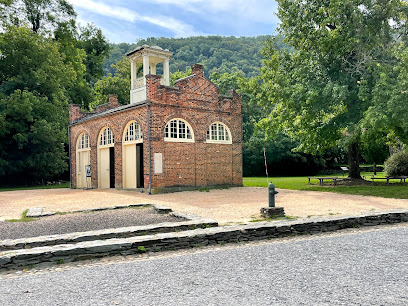
Lower Town Harper's Ferry
Explore the historic charm and breathtaking landscapes of Lower Town Harper's Ferry, where the rivers meet rich American history.

Harpers Ferry National Historical Park Administrative Headquarters
Explore the rich history and stunning landscapes of Harpers Ferry National Historical Park, where nature meets America's past.

Monument to Heyward Shepherd
Explore the Monument to Heyward Shepherd in Harpers Ferry, a significant historical landmark honoring the legacy of freedom and sacrifice.

Lewis and Clark National Historic Trail
Discover the historic Lewis and Clark National Historic Trail in Harpers Ferry, where adventure meets history in the stunning landscapes of West Virginia.

Harpers Ferry National Historic District
Explore Harpers Ferry National Historic District, a captivating blend of history, stunning scenery, and vibrant local culture in West Virginia.

Unmissable attractions to see
Leesburg Premium Outlets
Experience unbeatable savings and a diverse shopping selection at Leesburg Premium Outlets, Virginia's premier outlet destination.

Orr's Farm Market
Experience the taste of local produce and handcrafted goods at Orr's Farm Market, a vibrant farmers' market in Martinsburg, West Virginia.

Maryland Heights
Discover the breathtaking views and rich history at Maryland Heights, a must-visit park near Harpers Ferry, WV, perfect for nature lovers and history enthusiasts.

Maryland Heights
Explore the breathtaking vistas and rich history at Maryland Heights, a stunning park in Harpers Ferry, West Virginia, perfect for hiking and scenic views.

Nike Factory Store - Leesburg
Discover unbeatable deals on athletic apparel and footwear at the Nike Factory Store in Leesburg, your go-to destination for quality sportswear.

Outback Steakhouse
Experience the best steaks and Australian-inspired cuisine at Outback Steakhouse in Leesburg, Virginia.

John Brown's Fort
Discover the rich history of John Brown's Fort in Harpers Ferry, a landmark that shaped America’s past amid stunning natural beauty.

John Brown's Fort
Discover the rich historical significance of John Brown's Fort in Harpers Ferry, a pivotal site in America's fight against slavery and the Civil War.

adidas Outlet Store Leesburg
Find unbeatable deals on sportswear at adidas Outlet Store Leesburg, where quality meets style for all your athletic needs.

COACH Outlet
Explore luxury fashion at COACH Outlet in Leesburg, VA - stylish handbags and accessories at unbeatable prices for every discerning shopper.

Sunset Hills Vineyard
Discover the tranquility and exquisite wines of Sunset Hills Vineyard in Purcellville, Virginia - a must-visit for any wine lover.

Maryland Heights Trailhead
Explore the breathtaking Maryland Heights Trailhead, a top hiking destination offering stunning views and serene nature in Maryland.

Doukenie Winery
Discover Doukenie Winery: A picturesque vineyard in Virginia offering exquisite wines and stunning landscapes for an unforgettable experience.
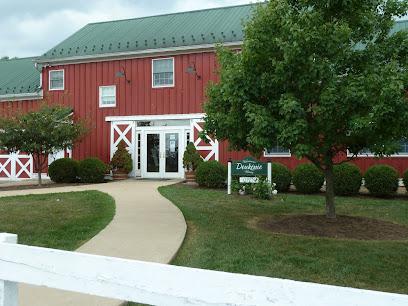
Ghost Tour of Harpers Ferry
Discover the haunting history of Harpers Ferry on a captivating ghost tour that reveals chilling tales and eerie experiences.

Harpers Ferry Toy Train Museum & Joy Line Railroad
Discover the magic of miniature railroads at Harpers Ferry Toy Train Museum & Joy Line Railroad, a captivating family-friendly attraction in West Virginia.

Essential places to dine
Coach House Bar & Grill
Discover delicious grilled dishes in Harpers Ferry's charming atmosphere at Coach House Bar & Grill.
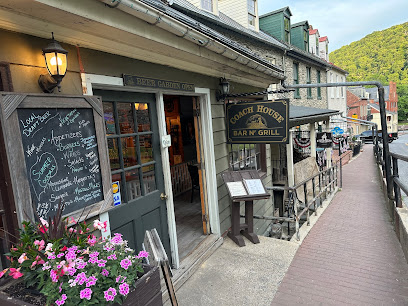
Yatai Hibachi Food Trailer
Discover the essence of Japanese cuisine at Yatai Hibachi Food Trailer in Harpers Ferry - where freshness meets flavor!

White Hall Tavern
Explore White Hall Tavern: A Historic Gem in Harpers Ferry Showcasing 1800s Charm and Rich American Heritage.

Markets, malls and hidden boutiques
True Treats Historic Candy
Indulge in a unique candy experience at True Treats Historic Candy, where delicious history and sweet nostalgia meet in Harpers Ferry.
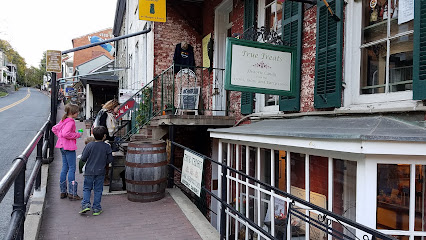
Tenfold Fair Trade Collection
Explore the Tenfold Fair Trade Collection for unique, ethically sourced gifts that support artisans and sustainable practices.
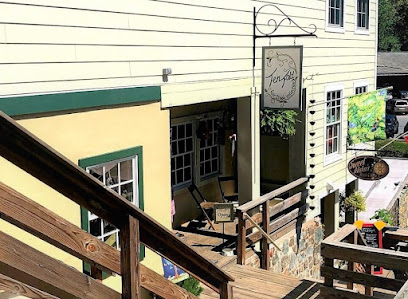
Bookshop
Explore local history and literature at the Harpers Ferry Bookshop, a charming destination for book lovers in the heart of West Virginia.

Vintage Lady
Explore Vintage Lady: A charming boutique in Harpers Ferry, offering handcrafted treasures and unique jewelry that celebrate local artistry.

Tessoterica
Explore Tessoterica in Harpers Ferry: A charming gift shop and bubble tea haven offering unique souvenirs and local delights.

Harpers Ferry General Store
Explore Harpers Ferry General Store for unique gifts and local crafts in a historic setting, perfect for tourists and outdoor enthusiasts alike.

Blacksmith Shop
Explore the Blacksmith Shop in Harpers Ferry, a historical gem showcasing the art of blacksmithing and the rich heritage of early America.
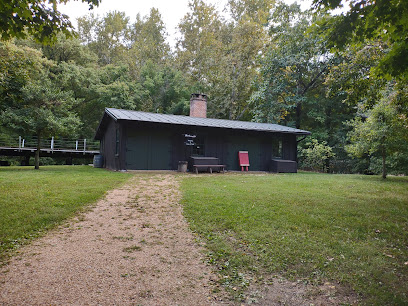
Dry Goods Store
Discover the charm of the past at Harpers Ferry's Dry Goods Store, a captivating historical museum showcasing 19th-century retail.
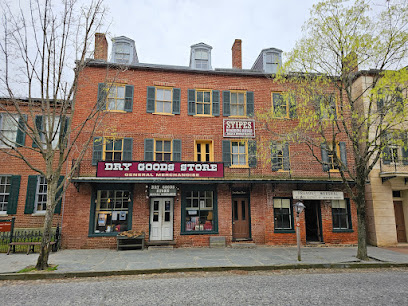
Hodge Podge
Explore Hodge Podge, the charming gift shop in Harpers Ferry, WV, offering unique souvenirs, local crafts, and delightful candies.

Frankel Bros. Clothing Store
Explore Harpers Ferry's rich history at Frankel Bros. Clothing Store, a charming historical site featuring vintage clothing and authentic artifacts.

Charlie's Stuff
Uncover hidden treasures and vintage finds at Charlie's Stuff, Harpers Ferry's charming junk store filled with unique antiques and collectibles.

The Village Shop
Discover unique home goods and local treasures at The Village Shop in Harpers Ferry, a must-visit destination for every traveler.

Essential bars & hidden hideouts
Glory Days Grill
Discover the ultimate sports bar experience at Glory Days Grill in Ranson, WV, offering delicious food and a vibrant atmosphere for all.

Paddy's
Experience the charm of an Irish pub at Paddy's, where hearty dishes and a lively atmosphere await in Charles Town, WV.

White Horse Tavern
Experience the essence of American dining at White Horse Tavern in Harpers Ferry, where every meal is a celebration of flavor and comfort.

The Rabbit Hole
Experience the charm of The Rabbit Hole in Harpers Ferry, where delightful dishes meet whimsical decor in a cozy, inviting atmosphere.

Applebee's Grill + Bar
Experience the heart of American dining at Applebee's Grill + Bar in Charles Town, where delicious meals and friendly service await.

Kelley Farm Kitchen
Discover Kelley Farm Kitchen: A Vegan Culinary Delight in Bolivar, West Virginia, Offering Unique Dishes and Homemade Desserts.

Country Café
Experience delicious American comfort food at the charming Country Café in Harpers Ferry, a must-visit for food lovers and history enthusiasts.

Longshot Billiards LLC
Discover the vibrant atmosphere of Longshot Billiards in Charles Town, WV - where delicious grill food meets exciting pool games.

Abolitionist Ale Works
Discover the vibrant craft beer scene at Abolitionist Ale Works in Charles Town, WV, featuring artisan brews, delicious pizzas, and a lively atmosphere.

Coach House Bar & Grill
Experience the flavors of Harpers Ferry at Coach House Bar & Grill, where hearty grill dishes meet local beers in a cozy setting.

Almost Heaven Pub and Grill
Experience the flavors of Harpers Ferry at Almost Heaven Pub and Grill, where local cuisine meets a welcoming atmosphere.

Cannonball Deli
Experience the best of Harpers Ferry at Cannonball Deli, where fresh ingredients and local flavors come together in a cozy setting.

Mountain Lake Club
Discover the beauty of Lake Shannondale at Mountain Lake Club, where relaxation meets adventure in a picturesque setting.

The Barn of Harpers Ferry
Experience the vibrant community spirit and local flavors at The Barn of Harpers Ferry, where every visit feels like a celebration.
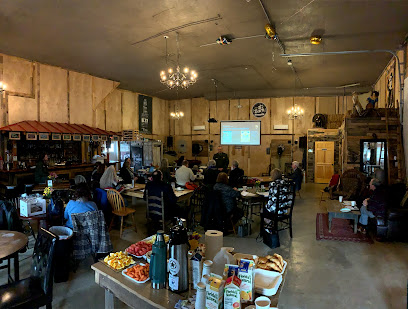
Rainbow Road Club
Discover the delightful fusion of diner classics and innovative dishes at the Rainbow Road Club in Charles Town, a must-visit gastropub experience.

Local Phrases about Harpers Ferry National Historical Park
-
- HelloHowdy
[haw-dee] - GoodbyeSo long
[so long] - YesYup
[yup] - NoNah
[nah] - Please/You're welcomePlease/You're welcome
[Please/You're welcome] - Thank youThank ye
[thank yee] - Excuse me/SorryPardon/Sorry
[pahr-dun/sor-ee] - How are you?Howdy
[haw-dee] - Fine. And you?Fine. And you?
[Fine. And you?] - Do you speak English?Ya speak English?
[ya speak Ing-glish] - I don't understandI don't git ya
[I don't git ya]
- HelloHowdy
-
- I'd like to see the menu, pleaseCan I see the menu, please
[Can I see the menu, please] - I don't eat meatI don't eat meat
[I don't eat meat] - Cheers!Cheers!
[Cheers!] - I would like to pay, pleaseI'd like to settle up, please
[I'd like to settle up, please]
- I'd like to see the menu, pleaseCan I see the menu, please
-
- Help!Help!
[Help!] - Go away!Git!
[Git!] - Call the Police!Call the Sheriff!
[Call the Sheriff!] - Call a doctor!Call a doc!
[Call a doc!] - I'm lostI'm turned around
[I'm turned around] - I'm illI'm poorly
[I'm poorly]
- Help!Help!
-
- I'd like to buy...I wanna buy...
[I wanna buy...] - I'm just lookingI'm just lookin'
[I'm just lookin'] - How much is it?How much fer it?
[How much fer it?] - That's too expensiveThat's too dear
[That's too dear] - Can you lower the price?Kin ya knock it down?
[Kin ya knock it down?]
- I'd like to buy...I wanna buy...
-
- What time is it?What's the time?
[What's the time?] - It's one o'clockIt's one o'clock
[It's one o'clock] - Half past (10)Half past (10)
[Half past (10)] - MorningMornin'
[Mornin'] - AfternoonAfternoon
[Afternoon] - EveningEvenin'
[Evenin'] - YesterdayYest'day
[Yest'day] - TodayToday
[Today] - TomorrowTomorrer
[Tomorrer] - 1One
[wun] - 2Two
[too] - 3Three
[three] - 4Four
[four] - 5Five
[five] - 6Six
[six] - 7Seven
[seven] - 8Eight
[eight] - 9Nine
[nine] - 10Ten
[ten]
- What time is it?What's the time?
-
- Where's a/the...?Where's a/the...?
[Where's a/the...?] - What's the address?What's the address?
[What's the address?] - Can you show me (on the map)?Kin ya show me (on the map)?
[Kin ya show me (on the map)?] - When's the next (bus)?When's the next (bus)?
[When's the next (bus)?] - A ticket (to ....)A ticket (to ....)
[A ticket (to ....)]
- Where's a/the...?Where's a/the...?
History of Harpers Ferry National Historical Park
-
Harpers Ferry was founded in 1763 by Robert Harper. The town is situated at the confluence of the Potomac and Shenandoah rivers. Harper established a ferry service across the Potomac, which played a crucial role in the town's early development and strategic importance.
-
In 1799, the United States government chose Harpers Ferry as the site for a federal armory and arsenal. This decision was influenced by the town's access to water power and its strategic location. The armory began operations in 1801 and produced thousands of muskets and rifles, making it a key supplier for the U.S. military.
-
Perhaps the most famous event in Harpers Ferry's history occurred in October 1859 when abolitionist John Brown led a raid on the federal armory. Brown aimed to incite a slave uprising by seizing weapons from the arsenal. Although the raid was ultimately unsuccessful and Brown was captured and executed, the event intensified national tensions leading up to the Civil War.
-
Harpers Ferry's strategic location made it a focal point during the Civil War. The town changed hands between Union and Confederate forces multiple times. Notably, in 1862, Confederate General Stonewall Jackson captured a large Union garrison during the Battle of Harpers Ferry, which was part of the Maryland Campaign leading up to the Battle of Antietam.
-
In the aftermath of the Civil War, Storer College was established in Harpers Ferry in 1867. It was one of the first institutions of higher learning for African Americans in the United States. The school played a significant role in the education and empowerment of African Americans during the Reconstruction era and beyond.
-
Harpers Ferry National Historical Park was established in 1944 to preserve the rich history and cultural heritage of the area. The park encompasses a variety of historical sites, including the remnants of the federal armory, John Brown's Fort, and the historic town itself. Today, it serves as a living museum, offering visitors insight into the many pivotal moments that took place in Harpers Ferry.
Harpers Ferry National Historical Park Essentials
-
Harpers Ferry National Historical Park is located at the confluence of the Potomac and Shenandoah rivers, in West Virginia. The nearest major airport is Washington Dulles International Airport, approximately 50 miles away. From the airport, you can rent a car or use rideshare services to reach Harpers Ferry. Alternatively, you can take an Amtrak train directly to the Harpers Ferry station, which is conveniently located near the park. Additionally, MARC commuter trains run from Union Station in Washington, D.C. to Harpers Ferry on weekdays.
-
Once in Harpers Ferry, the best way to get around is on foot, as many of the park's attractions are within walking distance of each other. For exploring areas further afield, consider renting a bicycle. The park also offers a shuttle bus that runs between key sites during peak seasons. Local taxi services and rideshare options like Uber and Lyft are available, although they may be limited in this rural area.
-
The official currency is the United States Dollar (USD). Credit and debit cards are widely accepted at most shops, restaurants, and hotels in and around Harpers Ferry. However, it's always a good idea to carry some cash, especially for small purchases or in case you visit more remote areas. ATMs are available within the town, including at the Visitor Center.
-
Harpers Ferry is generally a safe destination for travelers. However, as with any travel destination, it's important to take standard precautions. Avoid walking alone at night in secluded areas and keep an eye on your belongings in crowded places. There are no specific high-crime areas targeting tourists, but it's always best to stay vigilant and aware of your surroundings.
-
In case of emergency, dial 911 for immediate assistance. The Harpers Ferry Police Department and local medical facilities are available to help. It’s advisable to have travel insurance that covers medical emergencies. For minor health issues, there are pharmacies in the town where you can purchase over-the-counter medications.
-
Fashion: Do wear comfortable walking shoes and dress in layers, as the weather can be unpredictable. Avoid wearing overly casual or revealing clothing, especially when visiting historical sites. Religion: Do respect local customs and traditions, especially in religious or historical areas. Public Transport: Do be courteous and respectful when using the shuttle bus. Avoid loud conversations and give up your seat to elderly passengers if needed. Greetings: A friendly 'hello' or 'good morning' is usually appreciated. Handshakes are common when meeting new people. Eating & Drinking: Do try local cuisine and accept food offerings graciously. Don’t litter and always clean up after yourself, especially in natural areas.
-
To experience Harpers Ferry like a local, visit the lesser-known trails and historical sites that are off the beaten path. Engage with park rangers and local historians who can provide unique insights and stories. Don't miss the chance to kayak or raft on the Potomac or Shenandoah rivers for a different perspective of the area. Visit during the annual events like the Harpers Ferry Olde Tyme Christmas or the Civil War Living History weekends for a richer cultural experience.
Trending Landmarks in Harpers Ferry National Historical Park
-
Maryland Heights
-
John Brown's Fort
-
Jefferson Rock
-
Murphy Farm
-
Harpers Ferry Overlook
-
Original Site Robert Harper's Ferry
-
Lockwood House
-
Arsenal Square
-
Lower Town Harper's Ferry
-
Harpers Ferry National Historical Park Administrative Headquarters
-
Monument to Heyward Shepherd
-
Lewis and Clark National Historic Trail
-
Harpers Ferry National Historic District
Nearby Cities to Harpers Ferry National Historical Park
-
Things To Do in Martinsburg
-
Things To Do in Frederick
-
Things To Do in Hagerstown
-
Things To Do in Gaithersburg
-
Things To Do in Rockville
-
Things To Do in Bethesda
-
Things To Do in Gettysburg
-
Things To Do in Silver Spring
-
Things To Do in Laurel
-
Things To Do in Baltimore
-
Things To Do in Towson
-
Things To Do in Waldorf
-
Things To Do in Annapolis
-
Things To Do in Harrisonburg
-
Things To Do in Hershey












